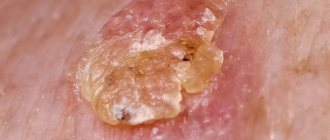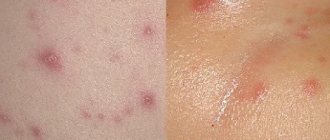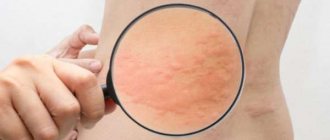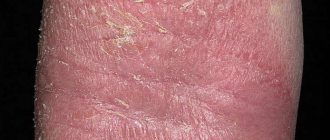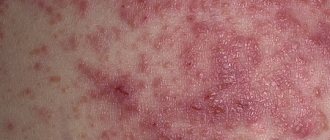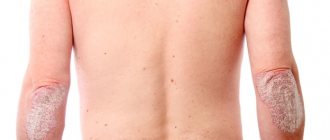Many will be surprised to hear that warts on the legs are not just a cosmetic defect that causes discomfort, but an infectious disease caused by papillomavirus (HPV).
After the pathogen enters the body, a small benign tumor appears on the skin, which looks like a papule, old callus or corn (the appearance depends on the strain of the pathogen).
In order to promptly identify and treat a contagious disease, it is necessary to familiarize yourself with the signs and consider ways to get rid of warty growths.
Causes
Despite the fact that the human papillomavirus is found on most people's skin, a wart does not always appear. In a healthy person, the immune system suppresses the growth of the pathogen, preventing the formation of warts.
In addition to the penetration of papillomavirus through cracks in the skin of the legs, there are additional reasons that provoke the occurrence of warts:
- Reduced immunity. A weakening of the body's defenses can be caused by vitamin deficiency or frequent infectious diseases.
- Liver dysfunction. The organ is responsible for clearing the blood of harmful substances, and if the liver does not function properly, toxins can accumulate in the blood, creating favorable conditions for the growth of warts.
- Poor nutrition. An excess of fatty and sweet foods in the diet leads to obesity and hyperhidrosis (increased sweating) of the legs, and sweat is a favorable environment for the pathogen.
- Intestinal diseases associated with malabsorption (enterocolitis, dysbacteriosis). Insufficient absorption through the walls of the small intestine results in the body not receiving enough important nutrients.
- Hormonal imbalance. Hormonal disorders reduce immunity and create favorable conditions for infection with papillomavirus.
- Pregnancy. Women's hormonal levels and metabolism change during pregnancy, which can cause the appearance of warts on the feet and legs.
- Childhood traumatism. If a child frequently injures his legs (cuts, abrasions), the risk of infection increases.
Without timely treatment, warts will spread further down the legs and affect healthy areas of the skin.
How to treat?
As long as the formations on the foot are small, they are rarely taken seriously, not to mention banal prevention. Sometimes the thorn disappears on its own, without any intervention. But this doesn't happen very often.
Plantar warts are very stubborn, so you should be persistent and be prepared for the fact that getting rid of them may require a fair amount of effort.
It is necessary to treat a wart when the body itself cannot cope with the disease, and it should be helped:
- if pain occurs,
- if the thorn interferes with walking,
- if the growth increases in size,
- if daughter spines appear next to the first spine on the foot.
Particular attention to the issue of treatment should be paid to children and adolescents, the elderly, as well as those who suffer from diabetes and other vascular diseases. This group of people needs to treat growths on their legs under the supervision of a doctor. The doctor will monitor the progress of the process and will be able to neutralize the body’s unpredictable reaction in time.
Types of warts
Depending on the type of HPV, the following types of warts may grow on the legs:
- Regular. They have the appearance of a tubercle with uneven edges and a wrinkled surface of a round or slightly flattened shape. They can grow to large sizes.
- Flat. Outwardly they look like a small tumor with a flat top, slightly raised above the skin (over time the top may become keratinized).
- Plantar. They can be mistaken for a flat callus with uneven edges (also called calluses on the foot); their favorite localization is on the fingers, near the nail or on the heel.
- Pointed. They look like a nodule, the surface of which is covered with an uneven crust (reminiscent of a mushroom in shape). Location: upper thigh, may spread to genitals.
If growths protruding above the surface of the skin almost immediately make it possible to suspect a wart, then flat growths on the foot, despite pain and discomfort, are often mistaken for calluses and corns.
Warts on the feet of children - what to do?
Why do warts appear in children? The reason for the formation of growths in children is the imperfection of their immune system, which is not always able to cope with viruses that attack the body. How do they look?
A child usually develops common (on the toes), plantar (on the foot, heel) and flat warts (on the knees). The disease most often affects children 12-16 years old.
How and with what can you cure warts in children? Treatment methods are prescribed by the doctor. It determines what products will be used against growths. This can be achieved through drug therapy, laser removal or other methods, and the use of creams and ointments.
In this video, the doctor talks about his many years of experience in treating foot and other warts and about the most effective remedy in his opinion:
Symptoms of the disease
An external sign of infection is the appearance of a growth on the skin, which begins to gradually grow.
The most common locations for warts are:
- foot;
- ankle;
- shin;
- hip.
In most cases, warty growths are initially white or flesh-colored, but gradually darken, acquiring a brownish-brown tint. The tumors are painless or cause mild itching. Pain occurs only when the wart is located in areas of strong weight pressure when walking (heel, balls of the feet).
An additional sign of a wart is that without appropriate treatment, the growth continues to gradually grow.
Before starting treatment, it is recommended to consult a doctor: some rashes or melanoma (skin cancer) can be mistaken for papillomas. It is not always possible to visually distinguish whether a cosmetic defect is a wart or has arisen for another reason - a blood test for HPV is required.
How to understand that it is not a blister
A wart differs from calluses on the feet in the following ways:
- The callus most often has liquid contents;
- A callus has unclear boundaries, while a wart has clear contours;
- The callus goes away quickly within a week.
A wart differs from corns in the following ways:
- When a corn forms, the skin pattern on the surface is preserved;
- Pain with a corns manifests itself throughout the entire area of formation, while a wart manifests itself with painful symptoms in the center;
- Unlike a wart, when the skin is damaged in the area of the corn, no bloody discharge appears.
In the first stages of a skin infection, it is very difficult to distinguish a wart from other types of diseases, so you should contact a specialist who will prescribe the appropriate treatment.
The spine does not appear spontaneously, but grows gradually. There are times when it disappears just as unnoticed. Therefore, some people live in a normal rhythm and do not even notice this process. But not everyone is so lucky. The evolution of the wart is described below.
At the initial stage:
- Only a small compaction appears on the skin, similar to a callus. In the image below you can see what a wart on the sole looks like at the very beginning of its appearance.
- This seal begins to itch and cause discomfort when walking.
After 10-20 days:
- A roughness begins to appear in the very center of the thorn, which can be felt with the pad of your finger.
- Often dark spots appear in the middle of the compaction - this is a consequence of blockage of the blood vessels.
- Along the edges of the growth, the skin rises and looks like a roll of keratinized cells.
- The color of a wart on the foot is often flesh-colored or dark brown.
The main manifestation: the formation of a rounded compaction on the sole of the foot.
The main symptom: itching in the area of the growth and discomfort when walking.
Treatment options
Once a wart appears, it should not be removed using manicure instruments - this will lead to complications. A wart, even a flat one, consists of the following parts: body, stalk and root.
Note! Mechanically, only the body and leg can be removed, but the root will remain and provoke the formation of warts on another part of the body.
There are three ways to remove a wart:
- medicines;
- mechanical removal using modern means;
- using alternative medicine methods.
Use of medications
The medicinal method helps to remove the spines relatively quickly (in about a month). The following are used against warts:
- Plasters. The most affordable is Salipod, which contains salicylic acid and sulfur, but other applicators can be used. The action of all patches is based on softening the dry base of the wart, which is gradually rejected by healthy skin.
- Antiviral agents. For people with weakened immune systems, the use of external medications is not enough, and they are prescribed antiviral tablets to suppress the activity of papillomavirus (Viferon, Isoprinosine, Groprinosine).
- Ointments. Drugs (Oxolinic, Salicylic, Viferon) help destroy the virus and soften the tumor. You need to smear the affected area on the skin 2 – 3 times a day. The result will be noticeable after about a month from the start of therapy. The speed of cure depends on the stage of introduction of the papillomavirus into the body.
Additionally, you can use iodine. An iodine alcohol solution dries the skin and promotes the death of papillomavirus.
Mechanical removal
You can quickly remove the spine in the clinic in the following ways:
- Cryodestruction (liquid nitrogen). Small papillomas can be removed in 1 session, but a large wart will require 2 to 4 procedures.
- Laser. You can burn off a wart with a laser in 1 session. The likelihood that the tumor will appear again is negligible.
- Electrocoagulation. The effect of a small current on the affected area of the skin helps to quickly get rid of papilloma.
- Surgical removal. Surgical treatment of the spine is carried out only when the neoplasm occupies a large area. The disadvantage of the method is that after excision of the affected tissue, the function of the limb is impaired, and patients lose their ability to work for 1 - 2 weeks and cannot walk normally. The operation is performed only on adults, and less traumatic methods are selected for children.
Traditional medicine recipes
You can get rid of small warts yourself, at home. But those who decide to fight papilloma using traditional methods need to be prepared that the therapy will be long-term. It will take at least a month to cure the spine.
You can remove a wart from your leg using the following recipes:
- Onion infusion. The onion is cut into slices and poured with a small amount of vinegar. The infusion is ready in a day. The liquid should be regularly applied to the surface of the papilloma 2 - 3 times a day.
- Garlic and horseradish paste. Chopped garlic and horseradish are mixed in a 1:1 ratio. The paste should be applied at night as a compress.
- Celandine. Pharmaceutical extract of celandine or juice of a fresh plant cauterizes the wart.
- Plant compresses. For compresses, you can use juice or pulp of dandelion, apple, Kalanchoe, cabbage. Compresses need to be done for a long time - from several weeks to months.
- Cement and chalk. The spine is sprinkled with a thin layer of a mixture of dry ingredients and secured with a bandage. The compress must not be wet.
- Nettle and burdock. The step-by-step method for using herbs is as follows: grind fresh nettle in a blender or meat grinder, place it on a burdock leaf, wrap the burdock over the affected skin on the leg and put on socks on top or secure with a bandage.
- Celery. The wart should be lubricated with freshly squeezed plant juice several times a day.
- Vinegar. Acetic acid penetrates the top layer of skin and causes necrosis of the spine tissue. Before applying the liquid, to increase the therapeutic effect, it is necessary to carefully remove the flaky, dead part of the papilloma.
- Garlic. A clove of garlic or gruel helps destroy the virus in tissues.
- Potato flowers. Potato flower compresses are an effective method of destroying papilloma. The result for small lesions will be noticeable after a week.
- Vinegar dough. Mix garlic, vinegar and flour in equal parts. A small cake is made from the resulting mass and applied as an application to the resulting growth.
- Horseradish. Horseradish juice or gruel is applied to the warts and secured with a bandage.
- Raw potatoes. Potato gruel, regularly applied to the wart, helps soften and slough off the affected tissue.
Important! Almost all folk remedies for warts are aggressive. To avoid burning healthy skin, areas around papillomas should be lubricated with a rich cream.
What does a wart on the leg look like?
Externally, a wart resembles a small protruding rounded nodule that forms between the toes or on the ground of the foot. These are benign contagious neoplasms of viral origin that are easy to remove. Plantar growths can be confused with dry calluses or corns. A distinctive feature of a wart from other skin defects is dark inclusions.
Most often, the growth resembles a series of small nodules that give off pain when pressed. Often they merge into a common dense scaly formation, which is covered with a gray crust. The epithelium around warts appears slightly lighter or darker compared to healthy skin.
All neoplasms are conditionally divided into:
The main location is the soles of the feet and heels. But there are warts on the interdigital area of the foot, on any toe and on the lower leg.
Prevention methods
The source of infection is a sick person and household items used by the carrier of the virus. But it is not always possible to become infected, because in most healthy people the immune system suppresses the activity of the pathogen.
To reduce the risk of infection, you need to follow simple rules:
- Strengthen the immune system: eat right, take walks in the fresh air and treat viral infections in a timely manner.
- Monitor the condition of the intestines and liver. These organs are responsible for supplying essential nutrients and cleansing the body of toxins.
- Maintain hygiene - clean, healthy skin is unattractive to the papilloma virus.
- Use personal hygiene items.
- When visiting public areas (sauna, swimming pool), wear slippers.
These measures will help significantly reduce the risk of warts appearing on different parts of the legs. If papillomas have arisen, then you do not need to ignore them: the longer the papillomavirus is in the body, the longer the treatment will be.
Untimely initiation of treatment usually occurs when the spine forms not on the sole, but on the side, and does not interfere with walking. For years, people may perceive papilloma simply as a cosmetic defect and not see a doctor, infecting their loved ones.
Ready-made medications for warts
Treatment of warts on the sole of the foot with local remedies is popular because people are afraid of surgery, and, alas, they do not protect against recurrence. Unfortunately, a viral wart on the foot may reappear several months after removal by laser or nitrogen. No doctor can guarantee the absence of relapse.
And anyone can buy ready-made products at a pharmacy at an affordable price. It is relatively safe to use such drugs if you follow the instructions. There are many remedies, but they have the same principle: they destroy the wart locally, it dies, turns black and falls off. Usually there are no traces left on the skin if the drug is carefully applied.
Let me tell you about several local remedies for treating plantar warts at home. They have the most positive feedback from patients.
CryoPharma system
The CryoPharma system allows you to freeze warts without visiting a clinic. The procedure, of course, will not be as effective as real cryotherapy, but in a few applications it is really possible to reduce tumors. To remove warts on toes, the exposure time is 10 seconds. If you want to remove warts on the soles of your feet, it is recommended to wait 40 seconds.
During the procedure, you will feel a slight burning and tingling sensation, the skin will turn white, but after removing the applicator, its color is restored. The wart itself may become very red, and a blister will form above its surface. After 14 days, the frozen tissue along with the tumor disappears.
Salipod patch
The Salipod patch is designed to remove dry calluses and warts. Its action is aimed at softening rough areas and destroying pathogens. The patch is applied only to the area where the wart is located. It has different sizes, which allows you to choose the most suitable one. The salipod is left for several hours, then removed and excess tissue is removed.
Many people make the mistake of forgetting about the patch for a day, but this causes burns for people with sensitive skin. It is better to spend 2-3 patches, sticking them on for 2-4 hours, than to use one, risking an inflammatory reaction to prolonged contact with aggressive acids.
Super Celandine
There are many names of products containing celandine for local action on plantar warts, but all of them cause necrosis of the neoplasm, as a result of which it is rejected after a few weeks. Before using the product, you need to thoroughly steam your feet in hot water, then dry your skin well with a terry towel. Treat the tissue near the wart with a rich cream that will protect against accidental contact with the active components of Celandine.
The product is applied pointwise to the wart on the foot. Just 1 drop is enough. Wait for the solution to dry completely. While using the drug, a burning sensation occurs. If discomfort increases, this means that the solution has reached healthy tissue. Rinse the skin quickly with water, treat with a regenerating agent (sea buckthorn oil, vitamins E, A in oil solution, Bepanten).
Home use of products with celandine for warts is possible only in the presence of small tumors. Under no circumstances should you cover your skin with a plaster after using the drug, under which a chemical burn may occur.
Removing warts with celandine at home can be dangerous, especially for people with diabetes, varicose veins and other diseases that are accompanied by impaired tissue trophism. In this case, it is better to treat warts in a medical center or beauty salon.
You cannot remove all plantar warts on your feet at the same time. Do it gradually. Preparations based on celandine are not used to reduce moles. This can lead to malignant tissue under the influence of a strong traumatic factor.
Disease prognosis
With timely treatment, the prognosis is favorable: the warty growth completely disappears and does not reappear.
The duration of treatment depends on the depth of penetration of the virus into the skin layers. For superficial lesions, 1–2 weeks of using external agents is sufficient, but for deep-rooted warts, patients will have to take antiviral drugs and use ointments or patches for several months.
Important! In rare cases, with advanced forms of pathology or with severely reduced immunity, a tumor may degenerate into a malignant one.
The appearance of warts on different parts of the legs indicates infection with papillomavirus. There is no need to ignore the problem that has arisen: the sooner you start treatment, the faster you will be able to get rid of the growth causing discomfort.


